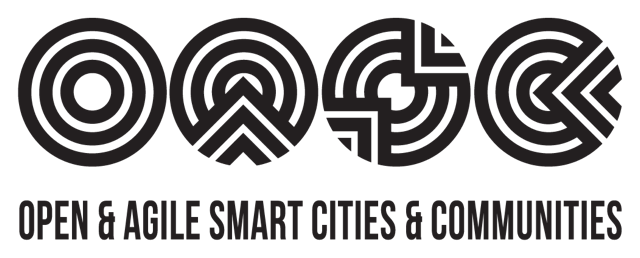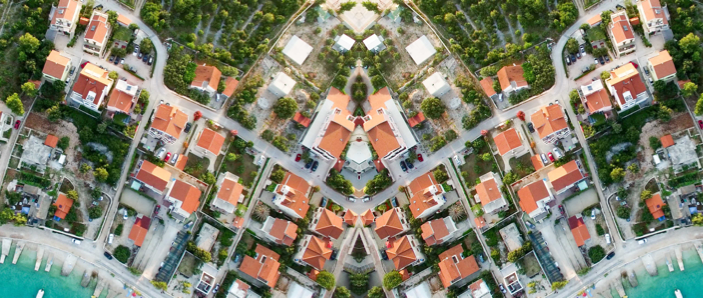The Digital Twin concept is the latest technology dominating the smart city hype cycle. While the technology has already been around for decades in engineering, thanks to more powerful processing and cloud storage, it has now entered the realm of city planning.
By Lea Hemetsberger, Project Manager, Open & Agile Smart Cities & Pilot Coordinator, DUET
The main promise of Digital Twins for local administrations is to make better-informed and transparent decisions with the help of data integration and visualisation from across the urban space. The technology also promises to make cities more resilient and – as the platform can also be made available to citizens via public interfaces – more co-creative.
But what is a Digital Twin in reality and how does it work?
A Digital Twin is, simply speaking, a virtual doppelgänger of the urban environment: buildings, streets, parks, trees, traffic and noise levels – all readily available as data points in a digital model. Some urban planners might shout out that this is nothing new. And indeed, urban planning departments have been using 2D – or even 3D – models and computer-aided design tools and models already for years. So what’s with all the hype about Digital Twins?
Real-time Trumps Static Data
In essence, it’s the integration of real-time data. GPS data from buses or trams, weather data, water levels of the river that flows through the city centre, the level of air pollution on the main street or even the amount of people that are passing through the main shopping street on a busy Saturday afternoon. Almost everything can be captured by sensors that are already deployed all over town.
The Digital Urban Twin is a hub for all this data: it integrates it and makes it usable for city departments and policymakers through real-time visualisations. A playground for city planners, the Digital Twin technology can digitally simulate the impact of almost any changes to the urban fabric. How does traffic change when we turn Street X into a pedestrian area? What happens if we reduce the car lanes on city highway Z and create a bike highway? Would the new metro line have a positive impact on air pollution? Should we create a park or a new parking lot in the area Y? These and many more scenarios are possible.
Using cutting-edge technologies such as cloud storage and high-performance computing, a Digital Twin becomes available for any city of any size. In theory, at least. In practice, however, it’s a bit more complicated.
Three Key Challenges Towards Digital Twin Adoption at Scale
The DUET Digital Urban Twin project has set out to make Digital Twin technology available for cities and towns of all sizes, solving some of the key challenges that are currently still standing in the way to the uptake of Digital Twins on a large scale:
- The Quest for Data
In the first months of the DUET project, we noticed a common denominator across all pilot sites: the quest for suitable data. While discussing scenarios with our pilot regions Athens, Pilsen and Flanders, the main challenge is not to find use cases for the Digital Twin, but where to find the data that is needed to turn the Digital Twin into a useful tool for all regions.
Sometimes the data is owned by private companies. Occasionally the federal level holds the data. Often, there is no real-time data available or only from a limited amount of sensors, and at times there is no data at all.
What we tend to forget is that many local governments around the globe are still at the beginning of their digital transformation journey. This limits, in particular, the availability of open, real-time, and quality data. While the open data movement has brought about change – especially in cities’ attitudes towards data– many local or regional governments do not have the capacity or are still not seeing themselves as a data broker or integrator.
- Lack of data standards
Once we have found suitable data to feed into our Digital Twin, a new challenge arises: is the data available in a usable format and can it easily be integrated into the data platform of the Digital Twin? Usually, the answer to both questions is no.
This is especially critical when a digital tool should scale across cities in different countries. To be able to integrate data and to avoid lock-in through proprietary standards, DUET is applying open standards and is working with OASC Minimal Interoperability Mechanisms to ensure that data is interoperable and the DUET Digital Twin can be applied and scaled across the three pilot regions.
- Cooperation on all levels
In order to make a Digital Urban Twin work locally and turn it into a useful tool for public administrations, cooperation and co-creation is fundamental.
For starters, any local administration needs the buy-in and support from their political leaders. Once secured, the innovation departments of a city need to involve their colleagues from the urban planning, mobility, environmental and/or other departments to find out what their expectations towards a Digital Twin are and how their colleagues would use it.
Once the main departments are aligned, it is crucial for the success of the Digital Twin to work with your local innovation ecosystem: involve living labs and your start-up and scale-up scene, engage with potential data providers such as public utilities, and work together with local research institutes as well as private or semi-private companies who are operating in your city.
Ways Forward: Digital Twins & The Digital Transformation
Digital Twins can and will support local administrations to make better-informed decisions. Just as the technology is already successful in the world of engineering, Digital Urban Twins will bring plenty of benefits to urban as well as rural places.
If we want our public administrations to make better policy decisions driven by data as set out by the European Data Strategy, projects like DUET and cities committing to sharing solutions are steps in the right direction, but it’s not enough. Cities and communities have to find and shape their role in a new digital world, develop the necessary digital capacities in-house or through meaningful co-operations, and adopt a new collaborative mindset towards data and digital tools across the administration.
Cities and communities need to come together in networks like Open & Agile Smart Cities and in movements such as the Join, Boost, Sustain declaration to face the challenges of digital transformation together and find ways to generate societal impact – based on openness and transparency – together. Instead of reinventing the wheel in every local community, sharing and reusing solutions based on open standards, like DUET Digital Urban Twins, will be key to a sustainable and cost-effective digital transformation.
Find out more about the DUET project here: www.digitalurbantwins.com

